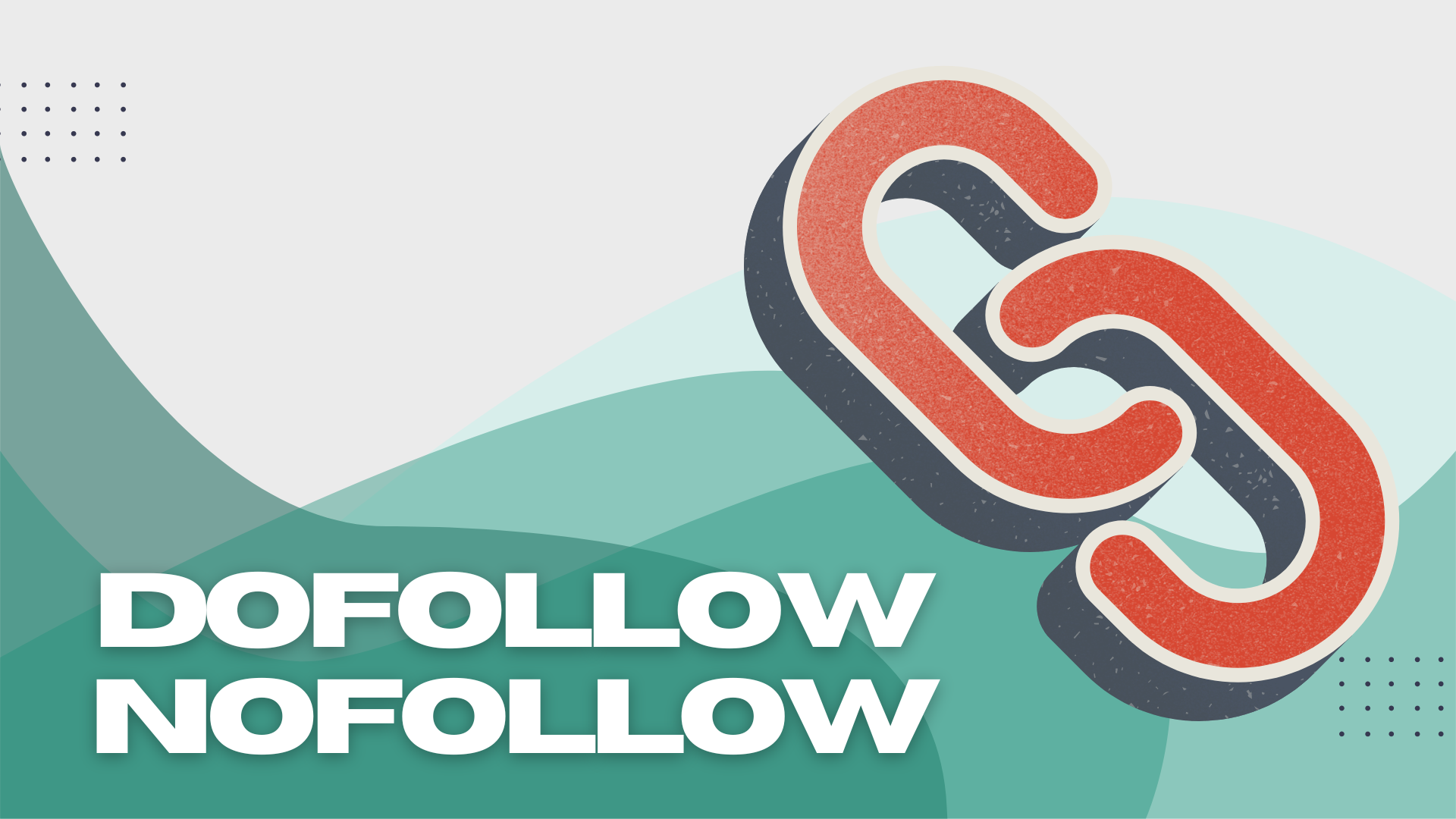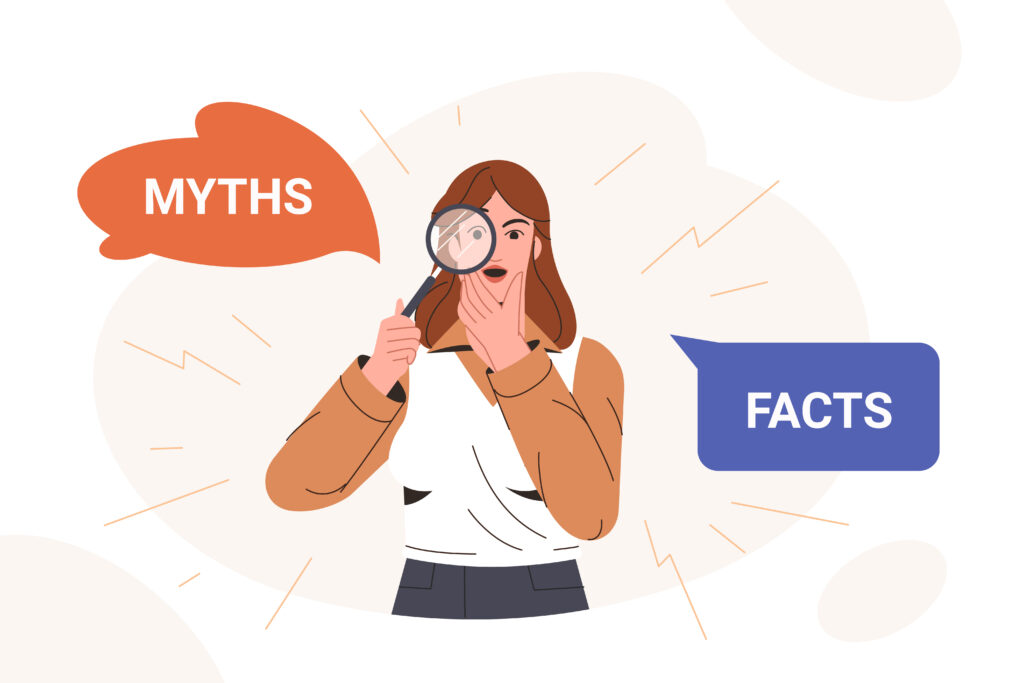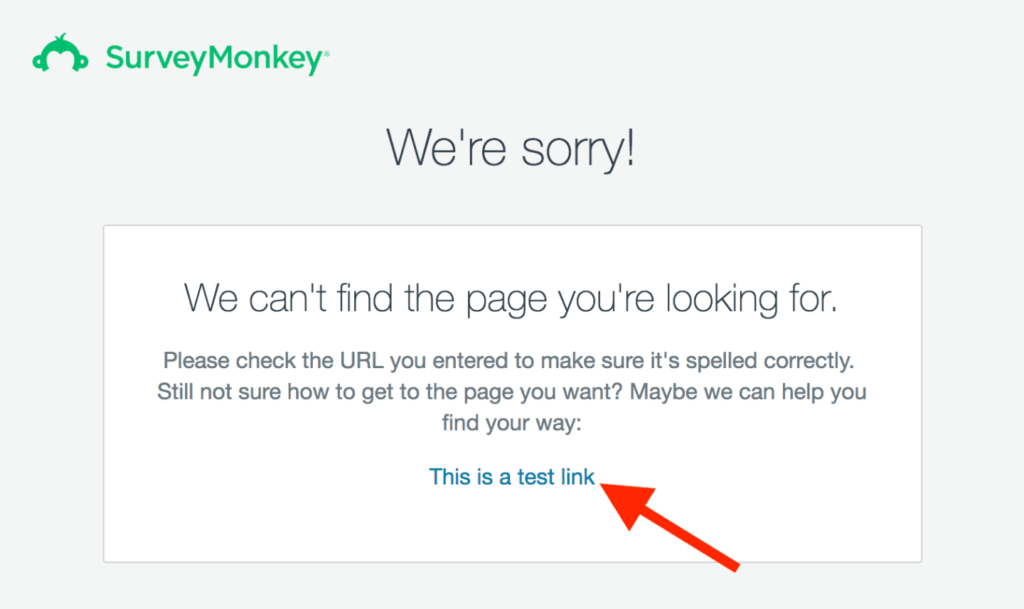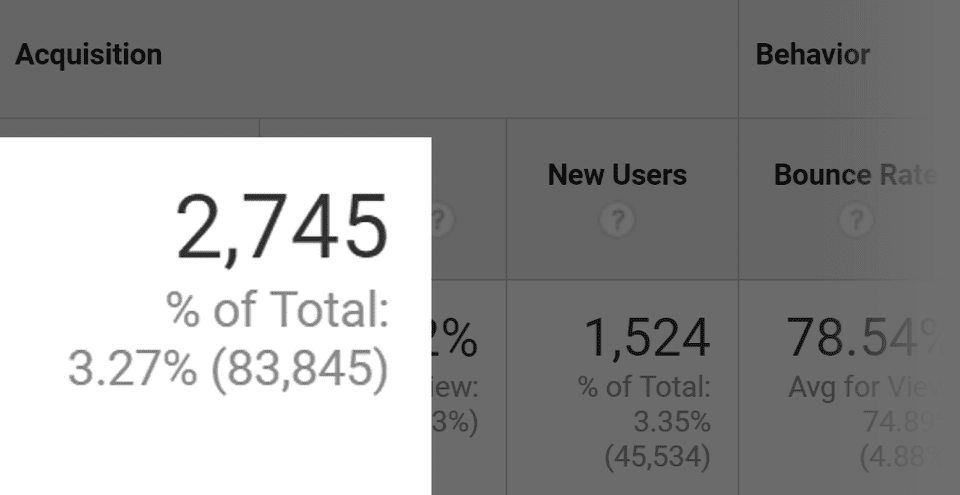
The debate between the value of nofollow and dofollow links continues to be a topic of significant discussion among digital marketers and website owners. There’s this common belief that dofollow links, known for their direct impact on search rankings through link equity, hold superior value over their nofollow counterparts. But what if I told you that’s not the whole story?
We’re about to dive deep into the benefits that nofollow links bring to the table, and soon you’ll find out both dofollow and nofollow links serve distinct purposes, how both types of links can coexist, each with their unique benefits, contributing to a balanced and effective SEO strategy. Along the way, we’ll explore real-life case studies to demonstrate their practical implications. And by the end of this, you’ll see nofollow links in a whole new light.
Table of Contents
Understanding Nofollow and Dofollow Links
Dofollow Links
Dofollow links, by default, allow search engines to follow them and pass on link equity, which is a vote of confidence from one site to another, potentially boosting the recipient site’s search engine rankings.
It’s like giving that other site a virtual high-five saying, “Hey, I trust this site and think it’s pretty cool, so you should check it out too!” So when a search engine crawls the web, it follows these dofollow links from one site to another. This helps search engines discover new content and determine how different websites are connected.
And here’s what a Dofollow link looks like:
<a href=”http"://example.com”>anchor text here</a>Nofollow Links
Nofollow links are HTML attributes that signal search engines not to follow or pass authority from one page to another. Google introduced nofollow links in 2005 to combat spammy link building. These links are identified by the rel=”nofollow” attribute in a link’s HTML code.
Nofollow links essentially tell search engines, “Don’t count this link as an endorsement.” They serve as a way to prevent certain types of content from influencing search engine rankings. For instance, user-generated comments on websites often contain nofollow links to avoid passing PageRank.
And here’s what a Nofollow link looks like:
<a href="https://example.com/" rel="nofollow">anchor text here</a>Key Differences
The main difference between nofollow and dofollow links is in how search engines use them to decide a website’s ranking.
Dofollow links help boost a site’s ranking, but nofollow links don’t affect it directly. Websites often use nofollow attributes for paid ads or links they don’t trust.
Since nofollow links do not influence a page’s search engine ranking, does that mean that nofollow links are totally worthless?
Not quite. Why you ask?
Let’s start by debunk some myths about nofollow links.

Image by redgreystock on Freepik
Debunking Nofollow Link Myths
Myth #1 Nofollow links have no value for SEO
While it’s true that nofollow links do not directly pass PageRank or influence rankings in the same way as dofollow links, but they can drive valuable traffic to your website.
Users who click on these links may be genuinely interested in your content or products, leading to increased visits, engagement, and potential conversions. More traffic can signal to search engines that your site is relevant and popular, indirectly benefiting your SEO efforts.
A study by Ahref analyzed 44,589 search engine results pages (SERPs) to understand correlations between page ranking and backlink metrics.
And guess what? It turns out that having a number of backlinks – whether they’re dofollow or not – seems to help boost your search engine ranking.

According to Ahref’s Chief Marketing Officer, Tim Soulo, “This could be an indication that Google values some nofollowed links from strong pages more than followed links from weak pages.” This insight shows how important nofollow links can be in affecting your page’s ranking.
Myth #2 Nofollow links do not help with indexing
While nofollow links are not directly followed by search engine crawlers for ranking purposes, they can still be crawled and indexed. They may not contribute to your site’s PageRank, but they can help search engines discover and index your content.
SurveyMonkey’s SEO head, Eli Schwartz decided to test if Google truly follows nofollow links. He added a nofollow link to one of SurveyMonkey’s 404 error pages, directing it to an unindexed page. In theory, Google would ignore the link right? But no, it followed the link and indexed the page within just 48 hours.

Credits: Backlinko
Myth #3 Nofollow links are ignored completely
Yes, the rel=”nofollow” HTML tag in nofollow links instruct Google to disregard such links; however, Google has implemented significant alterations to its treatment of nofollow links.
“When nofollow was introduced, Google would not count any link marked this way as a signal to use within our search algorithms. This has now changed. All the link attributes—sponsored, ugc, and nofollow—are treated as hints about which links to consider or exclude within Search. We’ll use these hints—along with other signals—as a way to better understand how to appropriately analyze and use links within our systems.”
In simpler terms, Google’s algorithm doesn’t completely disregard nofollow links; rather, they do consider factors like the frequency and placement of nofollow links, especially when they come from authoritative sites.
Now we’ve gotten some common misconceptions out of the way, let’s jump into the real benefits of nofollow links!
The Value of Nofollow Links in SEO
Drive Traffic
Nofollow links may not directly impact your SEO rankings, but they can still bring valuable traffic to your website. These links, especially from reputable sources, attract curious users who click on them to explore your content or products.
More traffic can signal to search engines that your site is relevant and popular, indirectly benefiting your SEO efforts.
Let’s have a look at Adam White, a blogger. He wanted to improve his blog’s ranking for the keyword “backlink software.” Instead of solely focusing on acquiring dofollow links, he took a nofollow approach.
Adam purchased nothing but nofollow links on high-ranking authoritative sites. By leveraging the high-ranking of other sites and strategically backlinking to his own blog, Adam saw his ranking shoot up from #19 all the way to #1!

This case study shows just how effective nofollow links can be, especially when they’re coming from big-name sites. It goes to show that nofollow links from authoritative sources can outperform dofollow links from non-authoritative sites, so mixing up your link game with different approaches does pay off!
Enhancing Diversity
You’ve got to mix it up with both dofollow and nofollow links in your backlink game. It’s like having a balanced diet for your website’s SEO health – you want a bit of everything to keep things natural and legit. If all your links were dofollow, it might raise some eyebrows with the search engines.
When you’ve got a mix of links, it’s like telling Google, “Hey, we’re playing by the rules here!” Search engines love websites with diverse link profiles because it shows you’re the real deal, which leads to better rankings and enhances the credibility of your site.
Having authoritative websites mention or link to your site, regardless of the link attribute, further enhances your brand’s reputation and visibility.
Now, let’s talk results.
Take Sergey Grybniak’s client, for example. They saw a steady growth in high-quality traffic to their website, thanks to whom? — nofollow links.
With over 12,000 links, with 67% being nofollow links, they saw a 69% jump in organic traffic and a whopping 340% increase in referral traffic.



By crafting a natural link profile alongside high-quality content, you not only enhance your credibility and trustworthiness in the eyes of search engines but also the hearts of users. After all, users are more likely to click on links from sources they trust, regardless of whether they’re labeled as “follow” or “nofollow.”
Avoiding Penalties
Like I mentioned earlier, a natural backlink profile consists of both follow and nofollow links.
Using nofollow tags the right way can help you dodge penalties from search engines due to unnatural linking behaviors. If your site’s caught up in excessive link exchanges or paid schemes, you could end up in hot water with search engines.
So throwing in some nofollow tags where necessary shows you’re going by the guidelines and lowers the risk of getting penalized.
Research from SEMrush found that smart use of nofollow tags can seriously reduce the likelihood of receiving manual penalties from search engines, keeping your site’s overall SEO health.
Search engines frown upon spammy guest posting practices that manipulate rankings artificially. By employing nofollow tags strategically, you adhere to ethical linking practices while safeguarding your website from potential penalties.
Remember, it’s all about striking that sweet balance between dofollow and nofollow links on your site!
Long-Term Strategy
Building relationships with authoritative sites via nofollow mentions forms part of a sustainable digital marketing strategy. These connections can lead to future collaborations, partnerships, promotions, or growth opportunities down the line. Investing effort into fostering these relationships paves the way for long-term benefits beyond immediate SEO gains.
In a case study conducted by Brian Dean, he found that getting a nofollow link from a popular website could actually lead to a bunch of dofollow links.
So what happened was Brian wrote a guest post for Noah Kagan’s blog, but Noah made the link back to Brian’s site a nofollow one, just like the rest of his outbound links.
Now, you might think, “Well, that’s a bummer, right?”
But turns out, it wasn’t all bad. Brian got a ton of referral traffic from that post.

And here’s the kicker: lots of folks who found Brian through that post ended up linking to him on their own blogs. And guess what? Those links were dofollow ones.

And you know what that meant? It helped Brian’s rankings in the search results.
Now that you’ve seen the power of nofollow links, how can you start using them to your advantage?
Implementing Nofollow LInks Strategically
When to Use
User-generated Content
Nofollow links play a crucial role on platforms where users generate content, such as forums, blog comments, and social media. These tags are essential tools to combat spammers attempting to manipulate search engine rankings through comment spamming.
By utilizing nofollow attributes on these links, you foster genuine conversations and interactions among users while safeguarding your site’s reputation from any shady SEO practices.
Now, let’s take a look at how Brian Dean, the founder of Backlinko, utilizes strategically placed nofollow links to drive targeted traffic to his website.
Despite not directly impacting SEO, he wrote a Facebook post with a nofollow link to his site, and lo and behold, it generated a substantial 2,745 visitors!


Similarly, Brian leveraged the potential of nofollow links through leaving helpful blog comments on SEO and marketing blogs.

Although these comment links were nofollow, they still brought in a significant number of targeted visitors, especially when he was one of the first people to comment on a post.

And if the whole point of SEO is to have more visitors, isn’t this exactly what we want?
So, next time you’re dealing with user-generated content, remember: nofollow links are your best buds.
Paid Links
When it comes to paid links, it’s essential to use those nofollow tags. If you don’t, it can be interpreted as an attempt to influence search results artificially. They see it as trying to game the system.
But hey, using those nofollow tags on your paid links is like being upfront about things. It’s all about transparency and keeping your link-building game honest.
Here are some screenshots of a website that got struck by a link penalty. Once enjoying 1,500 monthly visits and ranking for over 500 keywords to almost nothing in just a few days.


And there you have it. A stark reminder of the importance of playing fair in the world of SEO. Don’t risk it—stick to the guidelines and keep those links nofollowed.
Final Remarks
Link building is all about getting people to find your website, explore it, become part of your community, and eventually make purchases.
When you think about it, the technical stuff like the “rel” attribute isn’t really that important. What matters is that a link brings someone to your site when they click on it,.
And here’s a fun fact: One link can lead to many more, which can give your site a boost in search engine rankings. Plus, even if a link starts out as a nofollow one, it can still end up being shared on other sites as a dofollow link, especially if it originally came from a popular website.
So, it’s like a chain reaction: Links bring traffic, traffic leads to engagement, and engagement can ultimately lead to more sales. After all, isn’t getting more people to your website the whole point of SEO?
Frequently Asked Questions
What are Nofollow and Dofollow Links?
Nofollow links do not pass link equity for SEO, while dofollow links do. Search engines like Google consider nofollow links as hints rather than directives to follow the linked page.
How can Nofollow Links Benefit SEO?
Nofollow links contribute to a natural backlink profile, diversify referral traffic sources, and enhance brand visibility without affecting search engine rankings directly.
How can I Identify Nofollow Links on a Website?
Inspect the source code or use browser extensions like “NoFollow” to highlight nofollow links on a webpage easily.
Should I Use Nofollow Links Strategically?
Yes, strategically implementing nofollow links helps manage link equity flow, prevent spammy practices, and maintain a healthy backlink profile for your website.
What are Some Best Practices for Using Nofollow Links?
Use nofollow tags when linking to user-generated content or paid promotions. Always prioritize user experience over search engine optimization when deciding whether to use nofollow attributes.
Related Article:
The following article may contain the author’s opinions and interpretations of the subject matter. Any of the products, services, or platforms mentioned is not sponsored or affiliated.
